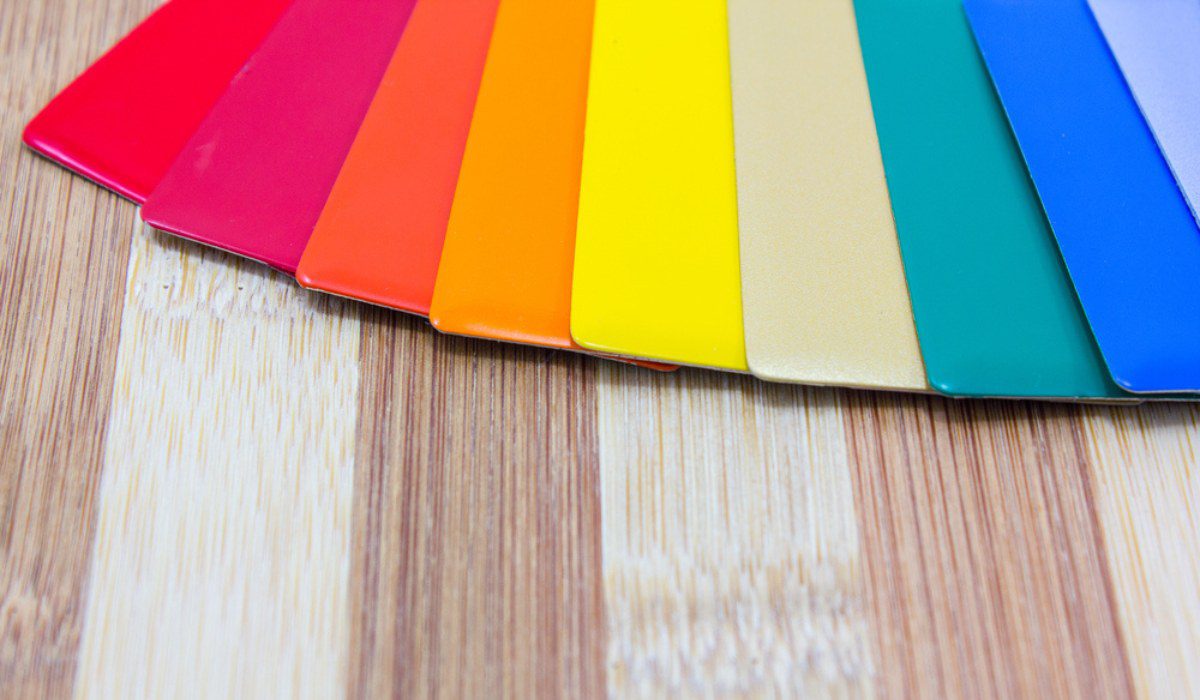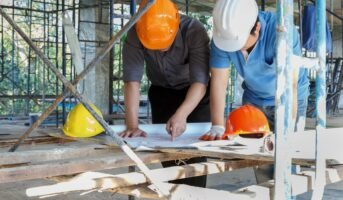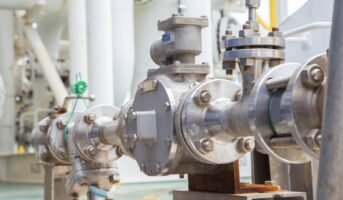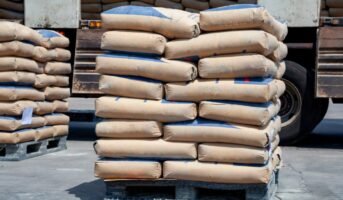Aluminium Composite Panel (ACP) is a modern construction material that combines aluminium’s strength and durability with a composite core’s versatility and flexibility. It is the perfect solution for a wide range of architectural and design applications, offering the best of both worlds in terms of functionality and aesthetics. With its lightweight and easy-to-install properties, ACP is a popular choice for cladding and interior design, providing an attractive and cost-effective alternative to traditional materials such as stone, brick, or glass.
Its excellent resistance to moisture, fire, and UV light makes it ideal for use in various indoor and outdoor settings, including building facades, interior partitions, and signage. Whether you want to create a contemporary or classic look, ACP has the versatility to meet your design needs, making it the go-to solution for modern construction and design.
See also: Curtain Walls: Aesthetics and energy efficiency for buildings
Properties of Aluminium Composite Panel
The aluminium composite panel is a building material consisting of two aluminium sheets sandwiching a core material, typically polyethene.
Here are some of its properties and characteristics:
- Durability: Aluminium composite panels are weather and corrosion-resistant, making them suitable for outdoor use.
- Lightweight: ACP is lightweight and easy to handle, making it ideal for large-scale cladding projects.
- Versatility: ACP can be moulded into various shapes and sizes, making it suitable for a variety of applications, such as walls, roofs, and partitions.
- Easy to install: ACP can be installed quickly and easily using standard tools, making it a cost-effective solution for building facades.
- Cost-effective: Aluminium composite panels are a cost-effective alternative to traditional building materials, such as stone and brick.
- Aesthetic appeal: ACP is available in various colours and finishes, making it suitable for creating visually appealing building facades.
- Fire resistance: Some types of ACP have been tested and have achieved high fire resistance ratings, making them suitable for high-rise buildings.
- Environmental friendly: ACP is recyclable and does not emit toxic fumes, making it an environmentally friendly building material.
Types of Aluminium Composite Panel
Aluminium Composite Panel (ACP) is a versatile material used in various applications such as building facades, interior decoration, signage, and advertising. Different types of ACP are available in the market, each with unique properties, advantages, and disadvantages.
Polyethylene Core ACP

Source: Pinterest
It is the most commonly used type of ACP. It is lightweight, durable, and easy to fabricate. The core of this ACP is made of a low-density polyethene material that provides insulation and soundproofing properties. Examples: Aludecor ACE, Alucoil, and Alstone.
Fire-Retardant ACP

Source: Pinterest
This type of ACP is designed to meet fire safety standards. It is made of a fire-resistant core material, which makes it an ideal choice for high-rise buildings, airports, and other public places. Example: Alucomat, Alucoil, Alstone.
Nano Aluminium Composite Panel

Source: Pinterest
This panel type is made of a particular core material, such as a nanocore, that is treated with a nanometer-scale layer of anti-bacterial and self-cleaning materials. It is used in applications where hygiene is essential. Example: Alumax Nano.
Brushed ACP

Source: Pinterest
This type of ACP has a brushed finish that gives it a textured look. It is used for interior decoration and signboards. Example: Aludecor, Alucoil, Alstone.
Mirror ACP

Source: Pinterest
This type of ACP has a reflective surface that resembles a mirror. It is used in interior decoration, cladding, and signage applications. Example: Aludecor, Alucoil, Alstone.
Wooden ACP
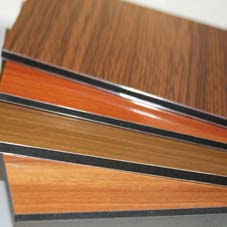
Source: Pinterest
This type of ACP has a wooden texture finish that makes it look like natural wood. It is used in interior decoration, cladding, and signage applications. Example: Aludecor, Alucoil, Alstone.
High-Pressure Laminate (HPL) Aluminium Composite Panel

Source: Pinterest
This panel type has a high-pressure laminate core, such as Formica or Wilsonart, sandwiched between two aluminium sheets. It offers a high-end look and is often used for building facades or wall cladding. Example: Alu HPL.
Overall, the choice of the type of ACP depends on the specific requirement of the project and the environment in which it will be used.
Applications of Aluminium Composite Panel
Aluminium composite panels are widely used in a variety of applications, including:
- Architecture and construction: Aluminium composite panels are commonly used in building facades, partitions, cladding, and roofing systems due to their durability, lightweight, and low maintenance. Examples include the Burj Khalifa in Dubai, the One World Trade Center in New York, and the Petronas Towers in Kuala Lumpur.
- Signage and advertising: ACP is an ideal material for making signs and billboards due to its versatility, lightweight, and durability. Examples include outdoor signs, exhibition displays, and illuminated signs.
- Transportation: ACP is commonly used in the transportation industry to make trains, buses, and aircraft interiors. Its lightweight and robust properties make it a suitable material for these applications.
- Retail interiors: ACP is used in the retail industry to create a modern and stylish look for store interiors. Examples include store fixtures, shelves, and partitions.
- Kitchen and bathroom cabinets: ACP is a popular choice for kitchen and bathroom cabinets due to its resistance to moisture, stains, and chemicals. It is easy to clean and maintain, making it a practical choice for these applications.
- Industrial applications: ACP is used in various industrial applications due to its ability to withstand high temperatures and chemicals. Examples include control panels, electrical enclosures, and machinery covers.
- Art and design: ACP is often used in art and design projects due to its ability to be shaped, drilled, and printed. Examples include large-scale murals, sculptures, and custom displays.
These panels offer several advantages, such as being lightweight, durable, and easy to install, making them a popular choice for various construction and design projects.
Maintenance and care of Aluminium Composite Panel
To maintain and care for an aluminium composite panel, follow these steps:
- Regular cleaning and wiping to prevent dirt and dust buildup.
- Avoid using harsh chemicals or abrasive materials.
- To clean, use a mild detergent and a soft cloth.
- Seal any cuts or scratches to prevent moisture penetration.
- Regularly check for traces of damage or deterioration.
- Store the panel in a dry and protected place when not in use.
- Avoid exposing the panel to extreme temperatures or UV rays.
- Replace damaged panels immediately to prevent further damage.
- For proper maintenance and care, adhere to the manufacturer’s instructions.
- Hire professional cleaners for deep cleaning or restoration work.
FAQs
What is an aluminium composite panel?
An aluminium composite panel is an architectural cladding material made of two aluminium sheets sandwiching a core material, usually polyethene.
What are the benefits of using aluminium composite panels?
Some benefits include durability, low weight, resistance to weather and UV rays, fire resistance, and ease of installation.
What are the applications of aluminium composite panels?
Aluminium composite panels are commonly used for cladding buildings, making signs and displays, and as partitions in interior spaces.
What are the different types of core materials used in aluminium composite panels?
The most common core materials in aluminium composite panels are polyethene, mineral-filled cores, and fire-resistant ones.
How long do aluminium composite panels last?
With proper maintenance, aluminium composite panels can last for over 30 years.
Are aluminium composite panels recyclable?
Yes, aluminium composite panels are recyclable and can be reused in other applications.
Are aluminium composite panels fire-resistant?
Yes, aluminium composite panels are fire resistant and meet the fire resistance requirements of most building codes.
| Got any questions or point of view on our article? We would love to hear from you.
Write to our Editor-in-Chief Jhumur Ghosh at jhumur.ghosh1@housing.com |
Housing News Desk is the news desk of leading online real estate portal, Housing.com. Housing News Desk focuses on a variety of topics such as real estate laws, taxes, current news, property trends, home loans, rentals, décor, green homes, home improvement, etc. The main objective of the news desk, is to cover the real estate sector from the perspective of providing information that is useful to the end-user.
Facebook: https://www.facebook.com/housing.com/
Twitter: https://twitter.com/Housing
Email: editor@housing.com
